Cultural and Spiritual Forest Significance
- August 15, 2024
- 0 comment
Forests hold profound cultural and spiritual significance across various societies, serving as sacred spaces, sources of inspiration, and integral parts of cultural identity. Throughout history, many cultures have revered forests as sanctuaries for the divine, places where the material and spiritual worlds intersect. Indigenous communities often view forests as ancestral homes and sources of life, embodying a deep connection to their heritage and the natural world.

These verdant landscapes are woven into myths, rituals, and ceremonies, reflecting their importance in cultural narratives and spiritual practices. The serenity and mystery of forests inspire reverence, offering a refuge for contemplation and spiritual renewal. In contemporary times, the cultural and spiritual value of forests continues to be recognized, underscoring the need to preserve these vital ecosystems not just for their environmental benefits but also for their role in enriching human culture and spirituality.
Table of Content
- Historical Perspectives
- Indigenous Beliefs and Practices
- Forests in Mythology and Folklore
- Spiritual Practices and Rituals
- Forests as Sources of Inspiration
- Contemporary Cultural Significance
- FAQs
Historical Perspectives
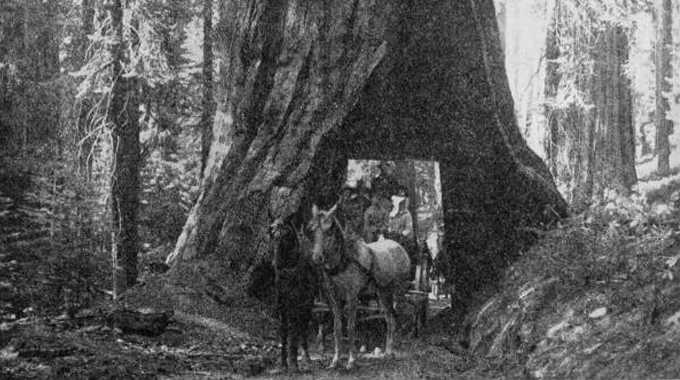
Ancient Civilizations and Their Forest-Related Myths and Legends
Throughout history, ancient civilizations have imbued forests with profound mythological significance. In Greek mythology, forests were home to deities like Artemis, the goddess of the hunt, who protected the wilderness and its creatures. The sacred groves of ancient Rome were believed to be inhabited by spirits and gods, playing a crucial role in their religious practices. Similarly, in Celtic culture, forests were revered as mystical places where druids performed sacred rituals and communicated with the spiritual world. These ancient narratives reflect a deep respect and reverence for the natural world, recognizing forests as spaces where the divine and mortal realms intertwined.
Role of Forests in Early Religious Practices and Rituals
Forests have long served as sacred spaces for religious practices and rituals. In many early religions, forests were seen as natural temples, providing a serene and untouched environment for worship. The dense canopy and tranquil atmosphere of forests made them ideal locations for meditation, prayer, and ceremonies. Sacred groves, such as those found in ancient India, were dedicated to specific deities and were often sites of pilgrimage and worship. These practices highlight the intrinsic connection between spirituality and the natural world, where forests were considered living embodiments of divine presence.
Indigenous Beliefs and Practices
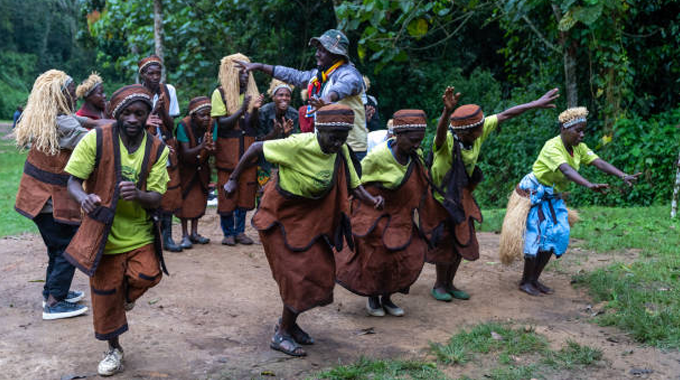
Sacred Forests and Their Significance in Indigenous Cultures
For indigenous cultures around the world, forests hold profound spiritual significance. Many indigenous communities view forests as sacred spaces that are central to their cultural and spiritual identity. For example, the Amazon rainforest is considered the “lungs of the Earth” by indigenous tribes, who believe it is their duty to protect and preserve it. Sacred forests are often seen as the dwelling places of ancestors, spirits, and deities, embodying the interconnectedness of all life. These sacred spaces are respected and protected, with rituals and ceremonies performed to honor the spirits that reside within them.
The Relationship Between Indigenous Communities and Their Forest Environments
Indigenous communities maintain a symbiotic relationship with their forest environments, relying on them for sustenance, shelter, and spiritual fulfillment. This relationship is based on a deep understanding of the natural world and its cycles, fostering a sense of stewardship and responsibility. Indigenous practices, such as sustainable hunting, gathering, and agricultural techniques, are designed to maintain the health and balance of the forest ecosystem. This harmonious coexistence underscores the cultural and spiritual importance of forests, where the well-being of the community is intrinsically linked to the health of the forest.
Forests as Ancestral Homes and Sources of Life
For many indigenous peoples, forests are considered ancestral homes that hold the memories and wisdom of their ancestors. These sacred landscapes are seen as living entities that provide guidance, protection, and sustenance. The forest is not just a physical space but a source of spiritual nourishment, where traditional forest knowledge and cultural practices are passed down through generations. This deep connection to the forest as a source of life and heritage reinforces the spiritual bond that indigenous communities share with their natural surroundings.
Forests in Mythology and Folklore

Common Themes of Forests in Global Myths and Folklore
Forests are a common motif in global myths and folklore, often depicted as places of mystery, transformation, and enchantment. From the enchanted woods of European fairy tales to the sacred groves of African folklore, forests symbolize the unknown and the mystical. These stories frequently feature journeys into the forest as rites of passage, where characters undergo trials, encounter magical beings, and emerge transformed. The recurring theme of the forest as a liminal space reflects its role as a bridge between the mundane and the supernatural.
Symbolic Representations of Forests in Various Cultures
Different cultures have ascribed various symbolic meanings to forests, reflecting their unique worldviews and spiritual beliefs. In many Asian cultures, forests are seen as symbols of longevity, wisdom, and resilience. The Japanese concept of “shinrin-yoku” or “forest bathing” emphasizes the healing and restorative powers of spending time in the forest. In contrast, Western cultures often view forests as untamed wildernesses that embody the spirit of adventure and the unknown. These symbolic representations highlight the diverse ways in which forests are perceived and valued across cultures.
Stories and Legends That Highlight the Spiritual Role of Forests
Stories and legends from around the world highlight the spiritual role of forests as places of divine intervention and moral lessons. In Hindu mythology, the epic tales of the Ramayana and Mahabharata feature forests as central settings where gods and heroes undergo significant trials and revelations. Similarly, Native American legends often depict forests as sacred landscapes where spirits reside and communicate with the living. These narratives emphasize the forest’s role as a spiritual realm where the ordinary laws of reality are suspended, and deeper truths are revealed.
Spiritual Practices and Rituals

Forests as Sites for Meditation, Prayer, and Spiritual Ceremonies
The serene and secluded nature of forests makes them ideal sites for meditation, prayer, and spiritual ceremonies. The natural beauty and tranquility of the forest environment foster a sense of peace and introspection, allowing individuals to connect with their inner selves and the divine. Many spiritual traditions, such as Buddhism and Hinduism, incorporate forest retreats as part of their practices, where monks and devotees spend time in solitude and contemplation. These practices underscore the forest’s role as a sanctuary for spiritual renewal and growth.
Role of Forests in Contemporary Spiritual Practices
In contemporary times, forests continue to play a significant role in spiritual practices. The growing interest in ecospirituality and nature-based religions highlights the forest’s enduring appeal as a spiritual haven. Practices such as forest bathing, nature meditation, and eco-rituals reflect a modern desire to reconnect with the natural world and find spiritual solace in its beauty. This renewed interest in forest spirituality emphasizes the timeless and universal appeal of forests as sources of inspiration and healing.
Examples of Specific Rituals and Their Meanings
Various spiritual traditions have specific rituals that are performed in forests, each with unique meanings and purposes. In Shinto, the traditional religion of Japan, rituals are conducted in sacred groves to honor kami (spirits) and seek their blessings. Similarly, in Celtic traditions, seasonal festivals such as Beltane and Samhain involve ceremonies held in forested areas to celebrate the cycles of nature and connect with the spirit world. These rituals highlight the forest’s role as a sacred space where spiritual and natural realms converge.
Forests as Sources of Inspiration

Influence of Forests on Art, Literature, and Music
Forests have long been sources of inspiration for artists, writers, and musicians, who draw on their beauty and mystery to create enduring works of art. The lush landscapes and diverse ecosystems of forests provide a rich tapestry of colors, shapes, and sounds that stimulate the creative imagination. From the romantic poetry of William Wordsworth to the haunting compositions of Gustav Mahler, forests have inspired countless masterpieces that capture their essence and evoke their timeless allure.
Examples of Famous Works Inspired by Forest Environments
Numerous famous works have been inspired by forest environments, reflecting their profound impact on human creativity. J.R.R. Tolkien’s “The Lord of the Rings” series, with its vivid depictions of ancient forests and mythical beings, draws heavily on the author’s love of nature and his experiences in the English countryside. Similarly, the paintings of the Hudson River School artists, such as Thomas Cole and Frederic Edwin Church, celebrate the majesty and grandeur of America’s forests, capturing their sublime beauty and spiritual significance.
The Psychological and Emotional Impact of Forests on Creativity and Inspiration
Spending time in forests has a profound psychological and emotional impact, fostering creativity and inspiration. The natural beauty and tranquility of forest environments provide a calming and restorative effect, reducing stress and enhancing mental clarity. Studies have shown that exposure to nature improves cognitive function and creativity, highlighting the forest’s role as a catalyst for innovative thinking and artistic expression. This connection between nature and creativity underscores the enduring appeal of forests as sources of inspiration and rejuvenation.
Contemporary Cultural Significance
Modern Views on the Cultural and Spiritual Value of Forests
In contemporary society, forests are increasingly recognized for their cultural and spiritual value, beyond their ecological and economic importance. The growing awareness of environmental issues and the need for sustainable living has renewed interest in the spiritual and cultural significance of forests. Movements such as forest therapy and nature spirituality reflect a modern appreciation for the forest’s role in promoting well-being and fostering a deeper connection to the natural world. This shift in perspective highlights the forest’s enduring relevance in contemporary culture and spirituality.
How Urban Societies Maintain a Connection to Forests
Urban societies maintain a connection to forests through various means, from the creation of urban green spaces to the promotion of nature-based activities. Parks, botanical gardens, and community forests provide urban dwellers with opportunities to experience the beauty and tranquility of natural environments. Initiatives such as tree planting campaigns and forest conservation projects foster a sense of stewardship and responsibility towards forests, bridging the gap between urban living and nature. These efforts underscore the importance of maintaining a connection to forests in an increasingly urbanized world.
The Role of Forests in Environmental Movements and Ecospirituality
Forests play a central role in environmental movements and the growing field of ecospirituality, which emphasizes the interconnectedness of all life and the spiritual value of nature. Activists and spiritual leaders advocate for the protection and preservation of forests, recognizing their essential role in maintaining ecological balance and supporting biodiversity. Practices such as nature meditation, forest retreats, and eco-rituals highlight the spiritual dimension of environmental stewardship, promoting a holistic approach to conservation that honors both the physical and spiritual significance of forests.
Frequently Asked Questions (FAQs)
- What is the cultural significance of forests?
Forests have been culturally significant throughout history, serving as settings for myths, legends, and folklore. They are revered in many traditions as sacred spaces and sources of inspiration. Forests play vital roles in rituals, ceremonies, and as symbols in art and literature, reflecting their deep-rooted presence in human culture. - How do different cultures view forests spiritually?
Different cultures view forests through various spiritual lenses. For many indigenous communities, forests are sacred, housing spirits, ancestors, and deities. In ancient civilizations, forests were often seen as divine realms where gods and humans could interact. Modern spiritual practices also recognize forests as places of healing, meditation, and ecological spirituality. - Why are forests considered sacred in indigenous cultures?
In indigenous cultures, forests are considered sacred because they are seen as living entities that embody the spirits of ancestors and deities. They provide sustenance, shelter, and spiritual nourishment, maintaining a balance between the community and the natural world. Rituals and ceremonies are performed in forests to honor these spiritual connections and ensure harmony with nature. - What role do forests play in mythology and folklore?
Forests play prominent roles in mythology and folklore as places of mystery, transformation, and enchantment. They are often depicted as settings for heroic quests, encounters with magical beings, and spiritual journeys. These narratives highlight the forest’s symbolic role as a bridge between the mundane and the supernatural. - How are forests used in spiritual practices and rituals?
Forests are used in spiritual practices and rituals as serene spaces for meditation, prayer, and ceremonies. Many traditions conduct rituals in forests to connect with nature, seek divine blessings, and achieve spiritual renewal. Contemporary practices such as forest bathing and nature meditation also emphasize the spiritual benefits of spending time in forests. - How do forests inspire art, literature, and music?
Forests inspire art, literature, and music by providing a rich source of visual, auditory, and emotional stimuli. The beauty and tranquility of forests have influenced countless works, from romantic poetry to classical music and landscape paintings. Artists often draw on the serene and mysterious qualities of forests to evoke themes of nature, spirituality, and human connection. - What is the modern cultural significance of forests?
In modern times, forests are valued for their cultural and spiritual significance, alongside their ecological importance. They are recognized as essential spaces for recreation, reflection, and environmental education. Urban societies maintain connections to forests through parks, green spaces, and conservation efforts, underscoring their ongoing relevance in contemporary life. - Why is it important to preserve forests for cultural and spiritual reasons?
Preserving forests is crucial for maintaining cultural heritage and spiritual practices. Forests hold collective memories, traditions, and spiritual significance for many communities. Protecting these environments ensures that future generations can continue to connect with their cultural roots and engage in spiritual practices that honor the natural world. - How do conservation efforts recognize the cultural and spiritual value of forests?
Conservation efforts recognize the cultural and spiritual value of forests by involving local communities in preservation initiatives, protecting sacred groves, and promoting sustainable practices. These efforts highlight the need to conserve forests not only for their ecological benefits but also for their role in enriching human culture and spirituality.

Gilbert Griffin
Forestry AuthorGilbert Griffin is a forest management expert specializing in sustainable practices, forest health, conservation, and land management. With extensive knowledge in pest control, disease management, and habitat restoration, Gilbert develops strategies to preserve forest ecosystems and biodiversity. Passionate about the natural world, Gilbert adapts to changes in forest management and stays updated through continuous learning. Gilbert also provides seasonal advice to optimize forest care throughout the year.


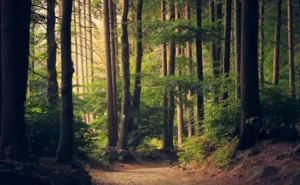





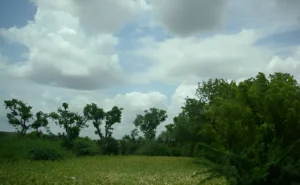


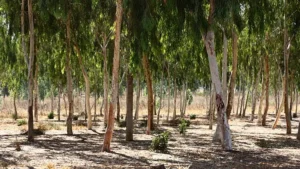

Leave your comment